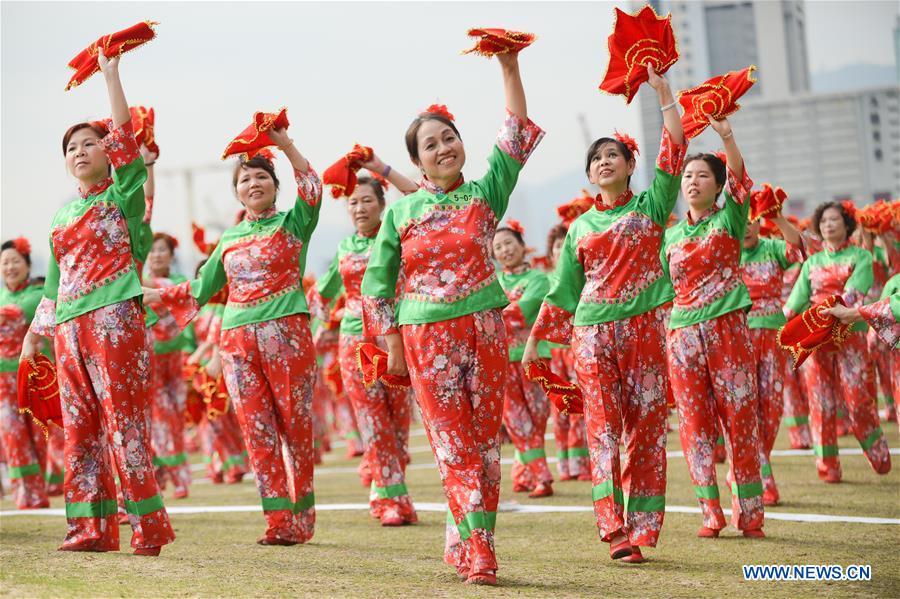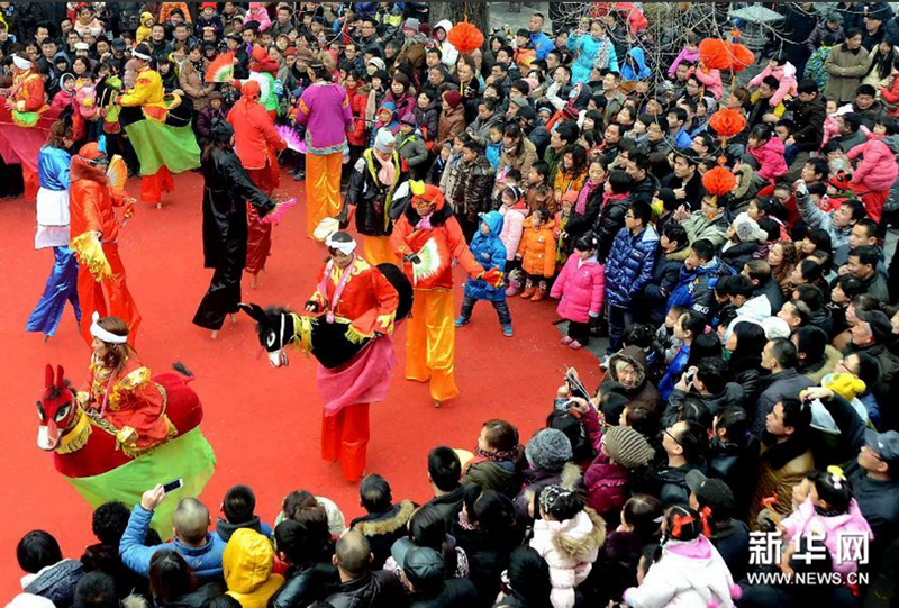2024-01-16 15:10:14

Yangko (秧歌, yāng gē) , a rural Chinese folk dance (乡村民间舞蹈, xiāng cūn mín jiān wǔ dǎo) with a history dating back thousands of years, originates from farming life in ancient times (起源于古代农耕文明时期, qǐ yuán yú gǔ dài nóng gēng wén míng shí qī). The dance relates to sacrifices to the farmland god (祭祀土地爷, jì sì tǔ dì yé) when people prayed for a good harvest (祈求丰收, qí qiú fēng shōu) . As time passed, the original dance evolved, taking in various artistic forms and skills, including opera, acrobatics and martial arts (戏曲、杂技以及武术, xì qǔ 、zá jì yǐ jí wǔ shù), and eventually developed into the type of Yangko that is seen today.

Featured among the inaugural items of national intangible cultural heritage in 2006 (2006年被列入国家级非物质文化遗产名录 , èr líng líng liù nián bèi liè rù guó jiā jí fēi wù zhì wén huà yí chǎn míng lù), Yangko is mainly popular in northern China (主要流行于北方地区 , zhǔ yào liú xíng yú běi fāng dì qū). People often perform the dance (扭秧歌, niǔ yāng ge) during festivals, especially for Chinese New Year and the Lantern Festival in the first lunar month (正月的春节和元宵节, zhēng yuè de chūn jié hé yuán xiāo jié). Performances or competitions are organized in towns and villages to express people's joy and their hope for a better life.

Yangko employs drumming, a Suona horn (唢呐, suǒ nà), dancing and singing. Content is based on folk stories and legends (民间故事和传说, mín jiān gù shi hé chuán shuō). Costumes are richly-colored and opera-styled (服装色彩丰富,多以戏剧服装为主 fú zhuāng sè cǎi fēng fù , duō yǐ xì jù fú zhuāng wéi zhǔ), enabling characters to be easily identified (人物易于辨认, rén wù yì yú biàn rèn). During a performance, the actors will dance and sing, following lively rhythms (生动的节奏载歌载舞, shēng dòng de jié zòu zài gē zài wǔ). Highly-skilled and interesting acts such as stilt walking (踩高跷, cǎi gāo qiāo) and carrying a wedding sedan chair (抬花轿, tái huā jiào) are also included. Yangko enjoys high popularity among the general public due to its humorous yet joyful form.
责编:田梦瑶
一审:田梦瑶
二审:秦慧英
三审:黄晓辉
我要问



 下载APP
下载APP 报料
报料 关于
关于
 湘公网安备 43010502000374号
湘公网安备 43010502000374号